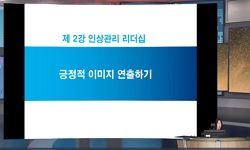The purpose of this study is to verify the validity of the Comprehensive Survey of the KoreanIntangible Heritage project, presently carried out by the National Intangible Heritage Center,an affiliated organization of the Cultural Heritage Administrati...
http://chineseinput.net/에서 pinyin(병음)방식으로 중국어를 변환할 수 있습니다.
변환된 중국어를 복사하여 사용하시면 됩니다.
- 中文 을 입력하시려면 zhongwen을 입력하시고 space를누르시면됩니다.
- 北京 을 입력하시려면 beijing을 입력하시고 space를 누르시면 됩니다.
무형문화유산으로서의 설화 항목선정·조사·보호의 문제 = How to Select, Investigate, and Protect a List of Tales as Intangible Cultural Heritages
한글로보기부가정보
다국어 초록 (Multilingual Abstract)
The purpose of this study is to verify the validity of the Comprehensive Survey of the KoreanIntangible Heritage project, presently carried out by the National Intangible Heritage Center,an affiliated organization of the Cultural Heritage Administration, and enhance its efficiency.
The project is intended to investigate intangible heritages in various areas, for example,music, dance, crafts, architecture, oral transmission, knowledge about folk medicine,traditional plays, or festivals, which are designated as intangible cultural heritage accordingto Article 14 of the Act on Safeguarding and Promotion of Intangible Cultural Heritage(enforced from March 28th, 2016).
This study examines the problems of the project regarding tales among the itemsdesignated as national intangible cultural heritage including “linguistic expressions, oraltransmission, word of mouth tradition, and expressions, and so on.” Particularly, thisauthor intensively discusses the problems of selecting items in the area of folktales, whatto be prepared and considered for field research, and the problems of protecting and usingfolktales as intangible heritage.
In this project, regarding folktales belonging to “linguistic expressions, oral transmission,word of mouth tradition, and expressions, and so on,” 65 items are designated on a tentativelist. Among the 65 items, however, some lack validity in the aspects of “representability,”one of the criteria for designating national intangible cultural heritage. To enhance thevalidity of these items, this author refers to previously published collections or dictionariesof folktales and suggests that it is needed to substitute folktales with or add a list of thefolktales that are more popular and representable.
Also, the tentative list of folktales it suggests does not include stories about personal lifeor historical experience belonging to oral discourse. But these items are meaningful inthat they are the products of mankind literature about modern and contemporary history and exhibit the aspects of folktale transmission changing from fictional to realistic oraldiscourse. Therefore, these data should also be included in the list of research in the project.
To this end, a lot of things need to be prepared or considered before field research, forexample, being aware of the items to be investigated, liaising for an informer, havingprinciples and methods to transcribe data, or writing a report with the informer. Examiningsuch issues, this researcher suggests referable data for this project collected from advancedresearch or reports to help minimize any possible problems in field research.
Lastly, this author examines methods suggested in advanced research about protecting andusing folktales and expressing consents positively. About folktales, to narrate them activelyin this age is an effective way to preserve and protect folktales; therefore, to use folktalesactively, this author suggests the organization of national folktale competitions (festivals),carrying out undergraduate mentoring projects, and making plans for elementary afterschoolclass aggressively.
국문 초록 (Abstract)
본 연구는 2016년 현재 문화재청 산하 국립무형유산원이 추진하고 있는 한국무형유산종합조사 사업의 타당성을 검증하고, 효율성을 높이기 위한 한 방편으로 진행되었다. 한국무형유산종합...
본 연구는 2016년 현재 문화재청 산하 국립무형유산원이 추진하고 있는 한국무형유산종합조사 사업의 타당성을 검증하고, 효율성을 높이기 위한 한 방편으로 진행되었다. 한국무형유산종합조사 사업에서는 무형문화재법 시행령(2016.3.28. 시행) 제14조에 명시된 국가무형문화재 지정 대상인 음악, 춤, 공예, 건축, 구비전승, 민간의약지식, 전통놀이, 축제 등 다양한 분야의 무형유산을 전면적으로 조사하게 된다.
본고에서는 국가무형문화재 지정 대상인 ‘언어 표현, 구비 전승, 그 밖의 구전 전통 및 표현 등’에 해당하는항목 중 설화를 중심으로, 현재 한국무형유산종합조사 사업의 문제점을 점검하였다. 특히 설화 분야 항목선정의 문제점, 현장조사시의 사전준비 사항과 유의점, 무형유산으로서의 설화를 보호하고 활용하는 문제등을 중점적으로 논의해 보았다.
현재 한국무형유산종합조사 사업에서 ‘언어 표현, 구비 전승, 그 밖의 구전 전통 및 표현 등’에 해당하는 설화에 대한 잠정적인 조사목록으로 65개 항목을 지정하고 있다. 그런데, 이러한 65개의 항목은 국가무형문화재 지정 기준 중에 하나인 ‘대표성’의 관점에서 타당성이 부족한 항목도 존재한다. 이러한 항목의 타당성을제고하기 위해서는 기존에 출판된 설화자료집, 설화사전 등을 참고하여 보다 더 대중적이고 대표성이 있는설화를 목록으로 대체, 추가할 것을 제안했다.
또한 한국무형유산종합조사 사업에서 제시된 설화잠정목록에는 구술담에 속하는 개인생애담이나 역사체험담 항목이 포함되어 있지 않다. 그런데 이 항목들은 근현대 역사에 대한 인류의 문학적 대응물이라는 점, 허구적 차원의 설화가 사실적 차원의 구술담으로 변화되어 가는 설화의 전승 양상을 보여준다는 점에서 의의가 있다. 따라서 이러한 자료 역시 한국무형유산종합조사 사업의 조사항목으로 포함시켜야 될 것이다.
한국무형유산종합조사 사업을 진행하기 위해서는 현장조사에 앞서 준비하거나 고려해야 할 사항이 매우 많다. 조사하고자 하는 항목에 대한 숙지, 제보자 섭외, 자료의 전사 원칙과 방법, 제보자 기록지 작성의 문제등등이 그것이다. 이와 관련한 문제들을 살펴보고, 기존의 연구와 보고서 등에서 이 사업에 참고할 만한 자료를 제시하였고, 이를 통해 현장조사의 문제를 최소화하는데 도움을 주고자 하였다.
마지막으로 설화의 보호와 활용에 대해 기존 연구에서 제시된 방안을 확인하고, 이에 대해 적극적으로 동의를 표했다. 그러면서 설화의 경우는 현재의 삶에서 활발히 구연하는 것이 곧 설화를 보존하고 보호하는길이라는 점에서 설화의 적극적 활용 방안으로, 전국적 규모의 이야기 경연대회(축제), 대학생 멘토링사업,초등학교 방과후수업 기획 등을 제안해 보았다
동일학술지(권/호) 다른 논문
-
- 국립무형유산원
- 김혜정
- 2016
-
- 국립무형유산원
- 강인숙
- 2016
-
- 국립무형유산원
- 허용호
- 2016
-
무형유산 보호대상으로서민간의료분야의 현재와 향후수집, 기록 연구의 방향
- 국립무형유산원
- 원보영
- 2016
분석정보
인용정보 인용지수 설명보기
학술지 이력
| 연월일 | 이력구분 | 이력상세 | 등재구분 |
|---|---|---|---|
| 2024 | 평가예정 | 재인증평가 신청대상 (재인증) | |
| 2021-01-01 | 평가 | 등재학술지 선정 (계속평가) |  |
| 2019-01-01 | 평가 | 등재후보학술지 선정 (신규평가) |  |




 KCI
KCI




